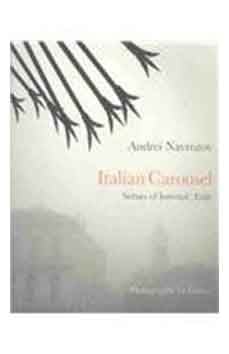Andrei Navrozov’s newest book of reminiscences is intended to be the literary and photographic proof of his “internal exile.” By this term, he underscores his distance from the present age, in which philistine housewives have seized control of our social and political institutions and mass culture has become increasingly degraded. In this present time of “babbling Maryanns,” Navrozov has chosen a life of secluded elegance in Italy, an option that may not be open to all of us but one that it is hard to fault him for taking. As in his other prose works—for example, the autobiographical The Gingerbread Race and his essays as corresponding editor for Chronicles (of which this is a collection)—Navrozov uses this work to display his verbal prowess. Almost every section, devoted to his impressions of peoples and places in Italy, abounds in well-wrought phrases. Although I have never had—and perhaps never will have—the good fortune to visit Monte Argentario on the Tyrrhenian Sea, both the promontory and its inhabitants are now etched in my mind by Navrozov’s descriptions. But some of the types encountered in his book, such as Fr. Peter Jacobs—a Jewish convert to Catholicism, who complements his priestly vocation by running an expensive restaurant in Trastevere and consorting with underworld financiers—seem too picaresque to be real. I shall take Navrozov’s word for it that Father Jacobs is not entirely a creature of his imagination.
The son of prominent Russian literary critic and longtime émigré, Lev Navrozov, and a gifted writer in English from the time of his undergraduate years at Yale, Andrei Navrozov is thoroughly steeped in a multilingual European culture. His depictions of Italian architectural splendors and long-dead churchmen are drawn from an Old World perspective that, though presented in English, would seem utterly foreign to my American students—or, for that matter, to my academic colleagues. Reading his testimony to “internal exile,” I conclude that Navrozov does not belong aesthetically or spiritually to the larger culture into which he has been thrust. Heidegger’s notion of Geworfenheit, designed to characterize the primal human condition of being thrown into existence, springs to mind while mulling over these commentaries.
What may be most striking about Navrozov’s cultural dissent is the almost totally apolitical form into which it is cast. Only toward the end of the book does he make perceptibly political remarks about dumpy housewives who have turned themselves into feminist spokeswomen, specimens of which graceless and mannish “Maryanns” are photographically included in his book. Navrozov complains, too, about the Barnumization of Europe and the European Union, which interferes with the culinary art of Venetians by denying them the right to market germoglio. (This word, which elsewhere in Italy refers to a bud, means for Venetians artichoke, called by other Italians carciofo.)
None of this is meant to suggest that Andrei Navrozov is not what Marxists would consider an “objective reactionary.” Like conservative aesthetes of the 19th and early 20th centuries, and like his father’s late friend Vladimir Nabokov, the author does not exactly breathe egalitarian vapors. Nor does he welcome the bringing of American-style global democracy to the Old World, including his ancestral land of Russia and his adopted Latin residence. The picture of the Statue of Liberty that his illustrator and drinking companion Mr. Gusov provides on page 187, beside an incongruous European background and captioned “This is the end,” presumably is not intended to serve the pedagogic purpose Fox News or the New York City Board of Education, in one of its publications, would reserve for it.
Indeed, Andrei Navrozov would make a fitting addition to the “unpatriotic right” lately identified by the same David Frum who worked at Old Eli to torpedo Andrei’s creation, the Yale Literary Review. In any case, I would never expect Navrozov to join George Will and Virginia Postrel in celebrating the “aesthetics” of consumerist America. Unlike Will and Postrel, our “internal exile” does not seem overcome by the “sensory experience” of sitting in Starbucks or of “redesigning” himself in Gold’s Gym. Although Will concedes that curmudgeons used to sneer at such consumerist epiphanies,
today thoughtful people have more appreciation of the complex prerequisites of a society that produces the abundance and honors the emancipation of choice and desire that results in supermarkets, advertising, and other things that are inextricably woven into a free society.
By contrast, Navrozov protests against a “new America” that has invaded Europe, “a place where actuary tables and shopping malls are churches, museums, and concert halls.” Which vision is closer to reality is a question each reader will have to decide for himself. For those who prefer Navrozov’s Nabokovesque evocations of the Italian carousel to the Will-Postrel alternative, the choice should be easy enough.
[Italian Carousel: Scenes of Internal Exile, by Andrei Navrozov, with photographs by Gusov (London: Peter Owen) 187 pp., $39.95]

Leave a Reply